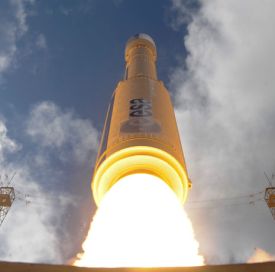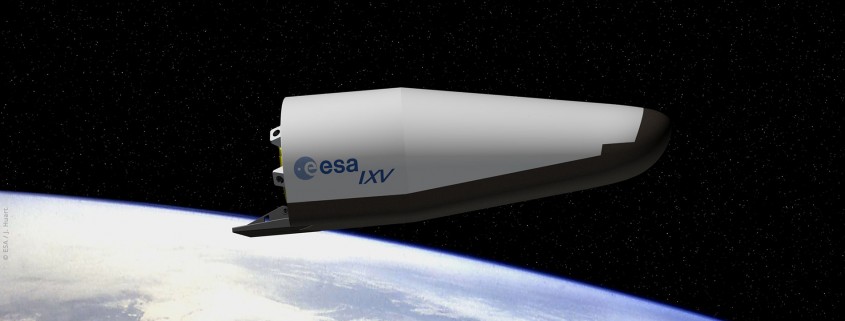
IXV launch
ESA, the European Space Agency, recently launched a re-entry vehicle to demonstrate the controlled return flight back to Earth. NLR comprehensively tested the descent of the vehicle for the supersonic flight regime in its wind tunnel in Amsterdam.
The re-entry vehicle – known as the ‘Intermediate eXperimental Vehicle (IXV)’ – was launched with a VEGA rocket from a base in Kourou, French Guiana. The vehicle subsequently performed a successful glide back to Earth from an altitude of 450 kilometres.
IXV features a lifting body design that is equipped with body flaps for controlled flight. The vehicle is fully equipped with sensors  to measure a multitude of data during the flight,as extremely high temperatures occur.
NLR is involved in the vehicle’s aerodynamic design by conducting windtunnel tests and flow simulations. DNW conducted the tests in the SST supersonic wind tunnel in Amsterdam. The efforts involved measuring and calculating the aerodynamic characteristics of the vehicle during the flight’s final stage, prior to the parachutes being activated. The supersonic flow conditions include speeds up to 4.5 times the speed of sound.
NLR’s measurement data have contributed to establishing the minimum flight speeds at which the vehicle can perform a controlled flight. The measurement data of NLR, DLR and ONERA are combined to determine and optimise the flight trajectory.
The demonstration of a controlled flight from space back to the Earth offers ESA new perspectives with regard to reusable launchers, the return of soil samples from other planets, and ultimately the return flights of astronauts.
Also watch our video about the wind tunnel testing.


